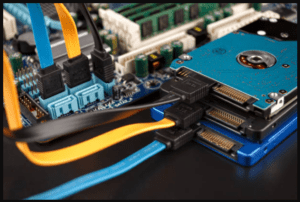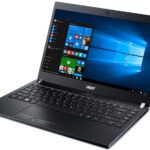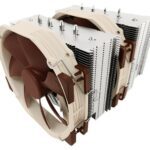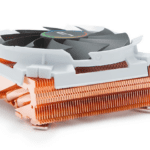Getting the Most Out of Asmedia SATA3 Ports
Asmedia is a popular manufacturer of storage controllers that are commonly integrated onto laptop and desktop motherboards. Many Asmedia controllers support SATA3 speeds, providing fast connectivity for solid state drives and mechanical hard drives. However, to obtain full SATA3 transfer rates from Asmedia ports, you need to ensure your SATA mode BIOS setting is properly configured. This article will explain what SATA3 is, the difference between AHCI and IDE/Legacy SATA modes, how to verify if SATA3 speeds are active, and steps to troubleshoot and optimize Asmedia SATA3 ports.
Contents
Understanding SATA3 Speed Capabilities
SATA3, also referred to as SATA 6Gbps, is currently the fastest widely available standard for SATA storage connections. Introduced in 2009, SATA3 provides theoretical maximum transfer speeds of up to 6 gigabits per second, almost double the bandwidth of the older SATA2 standard. This makes SATA3 well-suited for leveraging the performance of fast solid state drives, including M.2 NVMe SSDs mounted onto the motherboard via Asmedia controllers.

While mechanical hard drives cannot fully saturate a SATA3 connection, SSDs are easily capable of using over 500 MB/s bandwidth. Without SATA3, SSD speeds would become bottlenecked by the SATA interface. Asmedia SATA3 controllers enable tapping into the full speed potential of today’s latest high-performance SSDs when properly configured.
BIOS SATA Mode Options Explained
Most modern motherboards with Asmedia SATA ports allow configuring the SATA mode in the BIOS settings. There are typically two options available:
AHCI Mode:
Enables advanced SATA features like hot swapping, native command queuing for optimized drive access, and Link Power Management for energy savings. Most crucially, AHCI mode enables SATA 3Gbps and 6Gbps link speeds if the SATA hardware supports it. For Asmedia SATA3 controllers, this allows enabling transfers at full SATA3 6Gbps rates.
IDE/Legacy Mode:
IDE or Legacy mode emulates an older parallel ATA connection instead of SATA. This ensures backwards compatibility with older operating systems, but limits SATA ports to a maximum of SATA2 3Gbps speeds, regardless of if the SATA controller and connected drive support faster SATA3 capabilities.
So to unlock the full speed potential of high performance solid state drives connected over Asmedia SATA3 ports, you need to ensure AHCI mode is actively enabled in the motherboard’s BIOS settings. The legacy IDE mode will forever restrict SATA speeds to 3Gbps transfers, squandering available SATA3 6Gbps bandwidth.
Verifying SATA Mode Status in Windows
Once you have applied AHCI mode settings in the BIOS, reboot into Windows to check if SATA3 link speeds are now actively enabled. The easiest way is to open Windows Device Manager, expand the Storage Controllers section, right click on the Asmedia SATA Controller driver, and select Properties.
Navigate to the Advanced tab of the controller properties and verify the “Current Transfer Mode” field shows an active link speed of 6.0 Gbps. This confirms SATA3 modes are working, rather than being limited to 3.0 Gbps as per IDE mode restrictions. You can also observe attached SSD/HDD devices under the Disk Drives category to double check their transfer mode status.
If Asmedia ports still show 3.0 Gbps link speeds under AHCI mode, there may be an underlying hardware issue with the controller or motherboard tracing. Updating to the latest motherboard BIOS, chipset, or Asmedia SATA driver can also help troubleshoot speed issues. Otherwise for new builds, consider swapping out the SATA cables with high-quality ones certified for SATA 6Gbps operation.
Optimizing Asmedia SATA3 Ports for Peak Performance
Follow these best practice tips when connecting high performance SSDs to Asmedia SATA3 ports to guarantee full SATA3 speeds:
– Install the latest motherboard BIOS, chipset drivers, and Asmedia SATA controller drivers from your manufacturer’s website. Keeping everything updated maximizes stability and compatibility.
– Set the motherboard SATA mode to AHCI rather than IDE/Legacy mode in the BIOS. This lifts bandwidth limitations.
– Use high quality SATA6 cables rated for SATA 6Gbps signals, with locking connectors if possible. Avoid cheap generic cables.
– Directly connect SSDs to Intel or Asmedia SATA ports. Avoid secondary SATA controllers like JMicron which offer inferior performance.
– Keep firmware on Asmedia SSDs updated to the latest available version for best reliability and compatibility.
– If issues arise, diagnose problems using CrystalDiskMark or AS SSD Benchmark. This will confirm if sub-optimal SATA3 speeds are being reached.
Following these steps will help you gain the best real-world transfer speeds and experience from high performance solid state drives hooked up via Asmedia’s SATA3 storage controllers. Aligning optimal hardware with the right drivers and BIOS settings is key to maximizing SATA3 throughput potential.




